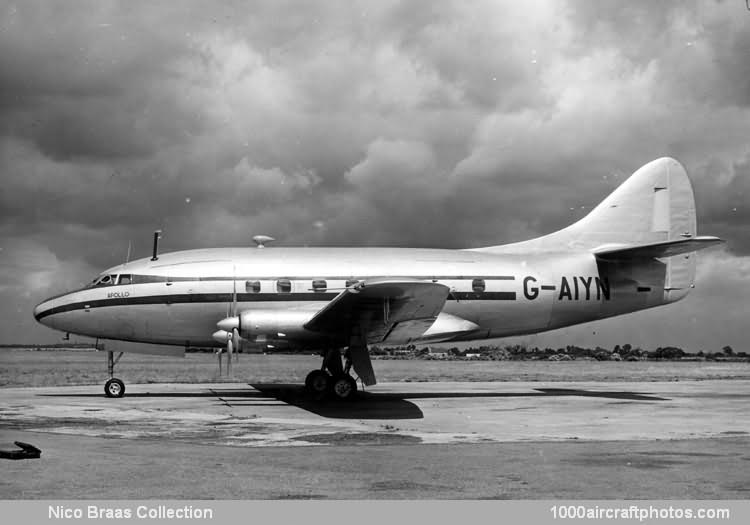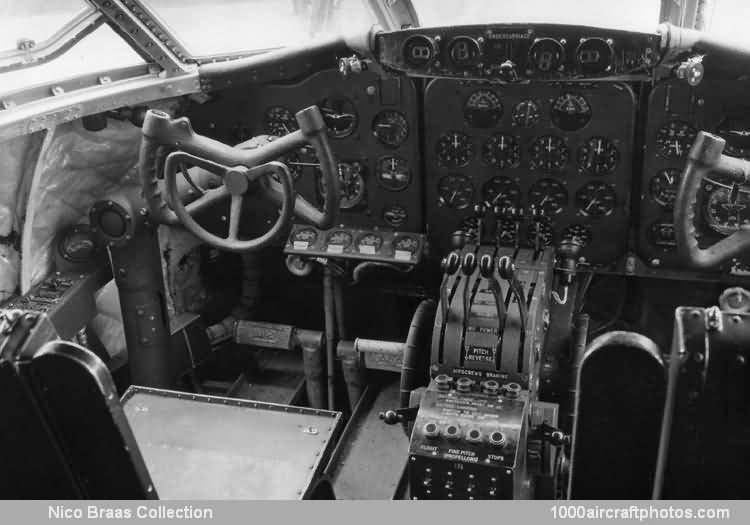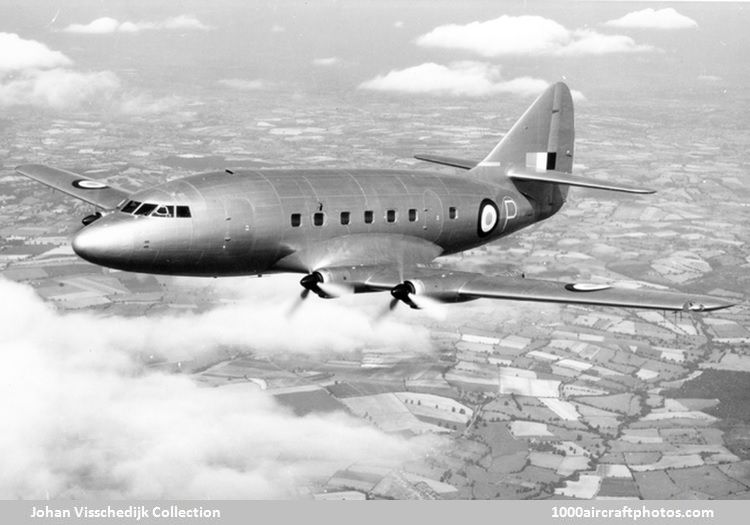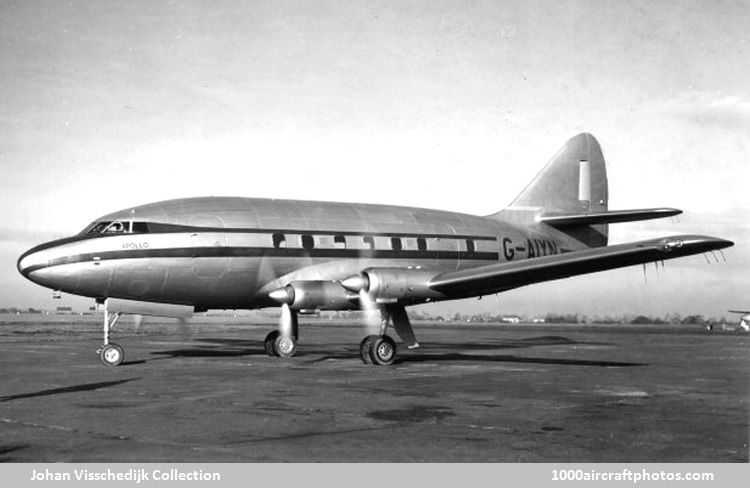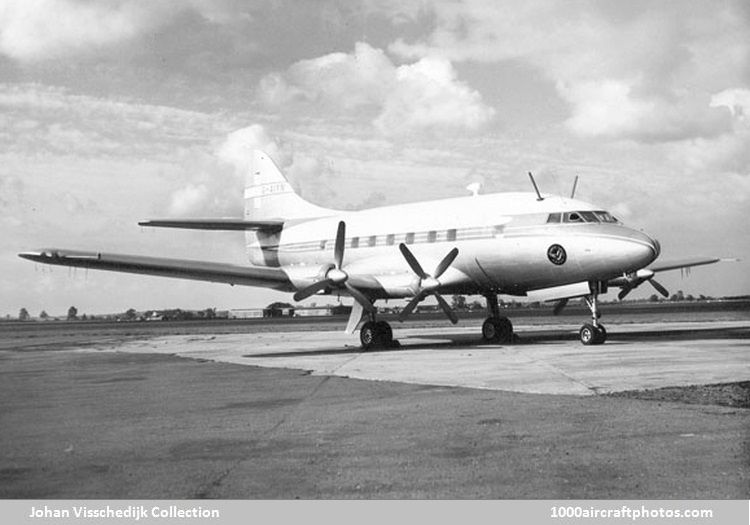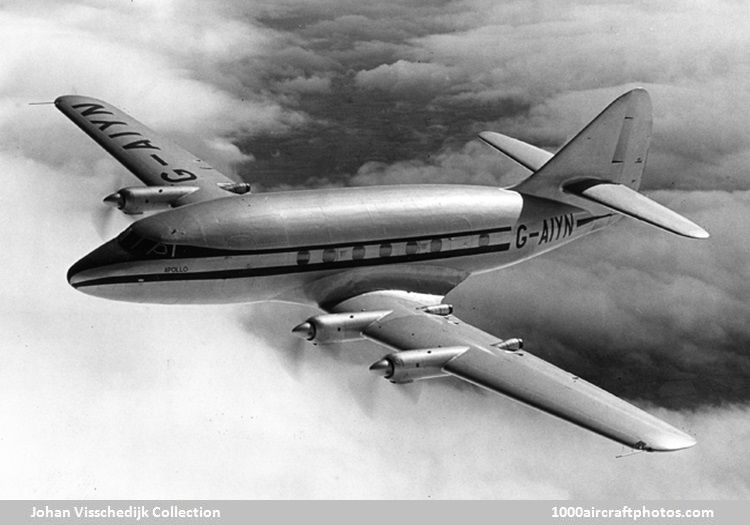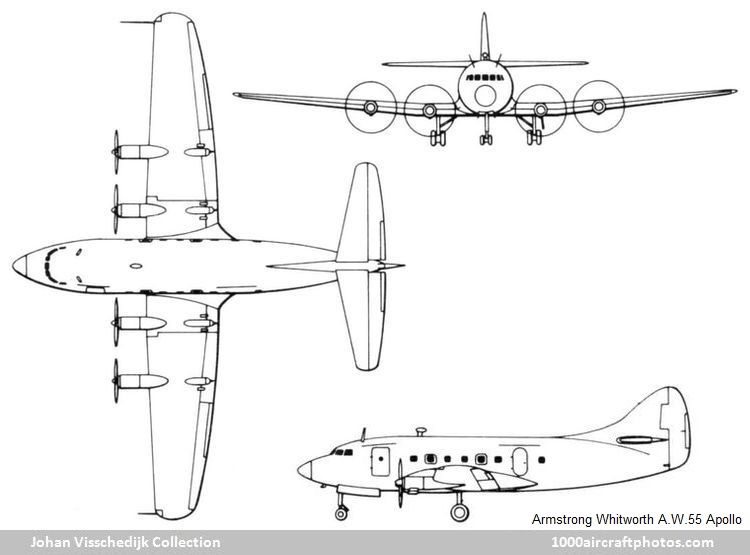04/30/2014. Remarks by
Johan Visschedijk: "The Apollo was designed as a competitor to the
Vickers Viscount in response to the requirement outlined in the wartime Brabazon Committee's Type IIB civil transport. It was a short- and medium-range airliner intended for operations in Europe. The
MoS Specification C.16/46 to which the Apollo was designed, called for a turboprop-powered airliner to carry between 24 and 30 passengers over a range of 1,000 mls (1,609 km) at 300 mph (483 kmh).
The engine selected was the axial-flow Armstrong Siddeley Mamba, which had the advantage of commendably low frontal area compared with contemporary centrifugal-flow turboprops. However, it was of a basic type still in its design infancy, and so prone to severe teething problems. A clear example of this is seen in the case of the Mamba: in the form first used on the Apollo, the engine should have developed 1,010 shp plus 307 lb (139 kg) thrust, whereas it developed only 800 shp.
Right from the beginning of the design, the AW.55 (first named Achilles and Avon before finally becoming Apollo) had a span of 92 ft (28.06 m), but length was increased from 64 ft 6 in (19.66 m) to 68 ft (20.73 m) and at the production stage to 71 ft 6 in (21.79 m).
A remarkable feature was the steerable nose wheel, which was steered from a small control wheel inside and concentric with the main control only for the first pilot.
(VX224) (
Johan Visschedijk Collection)
Under the serials VX220 (c/n A.W.3137) and VX224 (c/n A.W.3138), the MoS ordered two flying prototypes and a fuselage for static testing.
(G-AIYN) (
Johan Visschedijk Collection)
Construction began in 1948 and with Squadron Leader E.G. Franklin and Flight Lieutenant W.A. Else at the controls the first prototype made its initial flight at Baginton on April 10, 1949 and a limited
CofA clearance was obtained in December 1949, under the registration G-AIYN.
Apollo with four-bladed propellers in inner engines (G-AIYN) (
Johan Visschedijk Collection)
Right from the beginning there were severe problems with the Mamba engines' power output and reliability, and the aircraft itself lacked longitudinal and directional stability. Initially fitted with three-bladed propellers, later the inner engines were fitted with four-bladed propellers. The control problems were remedied without undue difficulty with an increased tail plane span and fin area.
(G-AIYN) (
Johan Visschedijk Collection)
The first prototype G-AIYN was available from October 30, 1950 for proving flights, starting with a successful flight to Paris on March 12, 1951. Finally, in July 1951, Mamba Mk.504 engines became available, but even these had severe limitations and problems. This proved the last straw, and in June 1952 further development was halted. The second prototype was subsequently completed and registered G-AMCH, it first flew December 12, 1952.
Both aircraft were used for a variety of experimental work for the MoS, including test flights with Decca Navigation System at Boscombe Down. Both aircraft ended their flying lives in December 1954 when they became structural-test airframes and were subsequently scrapped.
Two other versions of the A.W.55 were originally planned, to be powered by four Rolls-Royce Merlin 35 in-line or four Pratt & Whitney R-1830-S1C3-G radial engines. These however were not being proceeded with."
Type: Four-engined civil airliner.
Wings: Low-wing cantilever monoplane. Center section and two tapering outer wings. Dihedral of outer wings 6°. All-metal structure incorporated a central two-spar box structure with the outer smooth flush-riveted skin stiffened by spanwise corrugated strips, this structure was capable of taking end loads as well as shear. This central box was continuous from tip to tip through the fuselage and was fitted with doors under the fuel tanks, the doors being designed to take both direct and shear stresses. A device known as a "gust alleviator" allowed both ailerons to move upwards under the influence of an up-gust and damped out the effect of upward acceleration on passengers and crew. Fowler-type flaps inboard of ailerons. Thermal anti-icing.
Fuselage: Circular section all-metal monocoque structure. Channel-section formers supported Z-stringers to which the metal skin was riveted. Fuselage was pressurized from nose back to rear of passenger cabin; pressurization to a differential of 5.4 lb/sq.in (387 gr/sq.m).
Tail unit: Cantilever monoplane type. All-metal structure. Tail plane, of similar construction to wings, mounted above fuselage to clear engine exhaust. Large fin and horn-balanced rudder.
Landing gear: Retractable Lockheed tricycle type with steerable nose wheel. All units had twin Dunlop wheels. Main wheels raised inwardly and nose wheel backwards into fuselage. Hydraulic retraction.
Power plant: Four Armstrong Siddeley Mk.504 Mamba 2 airscrew gas turbines, each advertised to developing 1,010 airscrew shaft hp and 307 lb (140 kg) net jet thrust for take off. Three-blade de Havilland tractor airscrews. Electrical de-icing. Six fuel tanks in mainplane, total capacity 1167 gal (4,418 l).
Accommodation: Flight crew of three/four. Passenger compartment 10 ft 2 in (3.1 m) in diameter, entirely unobstructed. The stewards pantry was at the forward end, and at the aft end, separated from the passenger compartment by the entrance space, were two toilets and a cloakroom. Normal seating is for 26 passengers in pairs on each side of a central gangway. Accommodation could be provided for maximum of 41 passengers. Baggage and freight carried in three compartments, one forward between the flight deck and main cabin, one forward of the main wing spar and the third aft of the spar, the two latter compartments were below the cabin floor. The entire crew and passenger accommodation was air-conditioned and pressurized to maintain 8,000 ft (2,440 m) atmospheric pressure at 25,000 ft (7,625 m).
Equipment: Marconi MF and HF main and standby transmitters and receivers; Marconi AD 86 Beam Approach equipment and radio compass; G.E.C. I.L.S. equipment; Ultra Radio intercommunication; S.T.R. 12 V.H.F. radio and Rebecca 4 radar; Smiths S.E.P. 1 autopilot.
